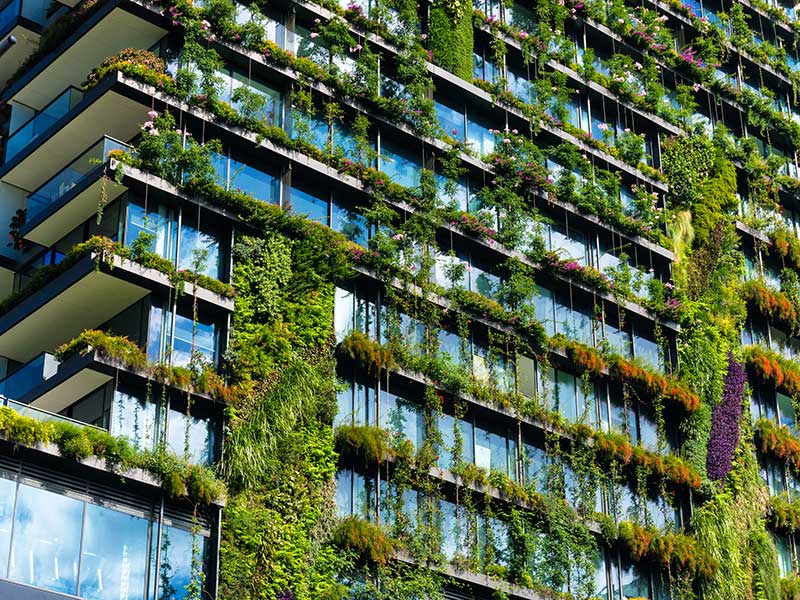The NSW Government has unveiled a $750 million program to help reduce the state’s emissions by promoting low emission technology and low carbon industries.
NSW has committed to net zero emissions by 2050, like every Australian state and territory. But NSW is aiming to achieve a 35 per cent reduction in emissions compared to 2005 levels by 2030.
At the federal level, Australia’s 2030 target is less ambitious at 26 to 28 per cent, and Prime Minister Scott Morrison has so far declined to commit to a 2050 target.

Unveiled by NSW Energy Minister Matt Kean at Port Kembla near Wollongong on Monday, the NSW Net Zero Industry and Innovation Program, is a “cornerstone” of the first phase of the state government’s 2050 Net Zero plan and is aimed at existing heavy polluters.
Most of the money – $380 million – is for grants and government co-investments for existing heavy polluting industries to re-tool with low emissions alternatives.
Funding will be allocated to facilities undertaking major capital upgrades of plant and equipment.
A further $175 million is earmarked for ‘low carbon industries’ such as green hydrogen. The remaining $195 million will go to R&D focused on new clean technologies for decarbonization.
“Almost 30 per cent of our State’s carbon emissions are created by our top 55 industrial facilities, which are critical contributors to the NSW economy,” Mr Kean said at a press conference held at BlueScope Steel, Australia’s 15th largest corporate emitter.
“Supporting their move to cleaner equipment, technology and processes will significantly reduce emissions, while helping to protect jobs and maintain a resilient economy.
Allume Energy non executive director Katerina Kimmorley said the program is welcome, but in the context of global changes more was needed from policy makers if Australia is to keep pace with a rapidly decarbonising world.
Ms Kimmorley told InnovationAus the likely introduction of carbon border adjustment mechanisms around the globe within the next two years – which operate effectively as a carbon tax on imports –meant Australian exporters would find themselves in an increasingly uncompetitive position.
“I feel like Matt Kean is the only one actually realising that we have to quickly help our industries decarbonise so that they can maintain their competitive status internationally.”
Mr Kean has led the development of more ambitious renewable energy and emissions reduction strategies for the state, including last year’s Electricity Infrastructure Roadmap.
Ms Kimmorley said the minister was effectively turning a risk into an opportunity.
“Because we have such abundant renewables in Australia and because we actually do have some good clean tech companies that are that are coming up, if we really get behind them [we could] be a world leader and export these technologies and show other sort of regional players how we’ve done it.
“If we get on the front foot and that’s kind of what he’s doing in my mind.”
Carola Jonas, the founder and chief executive officer of electric vehicle software company Everty also welcomed the announcement, which she says came after extensive consultation with industry.
“It’s a great push for renewables, a great push for transport and infrastructure,” Ms Jonas told InnovationAus.
Like every other Australian state and territory, NSW has now “put their money where their mouth is”, according to Ms Jonas, by announcing major emissions reduction strategies and a net zero 2050 policy.
Ms Jonas said NSW’s action would put pressure on federal counterparts to make more ambitious commitments, but pressure is rising elsewhere.
“We’re also seeing the pressure coming out of the US now that they have Joe Biden as President, doing massive, massive investments in infrastructure when it comes to renewables and zero emission solutions.”
However, local changes will need to come faster than many Australian organisations had anticipated, according to Kimmorley. But Australia still has a chance to be a world leader in emissions reduction technologies if it can help its biggest emitters to change.
“Because of the scale of those businesses, they have the opportunity to really be world leaders and export this technology because they have operations around the world. So I actually think it should be seen as a release of big GDP generator for us.”
Do you know more? Contact James Riley via Email.

